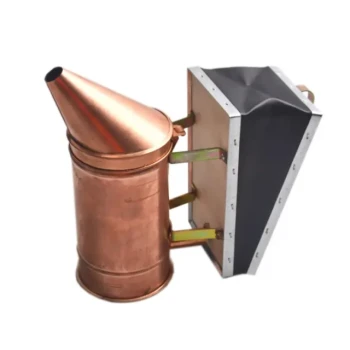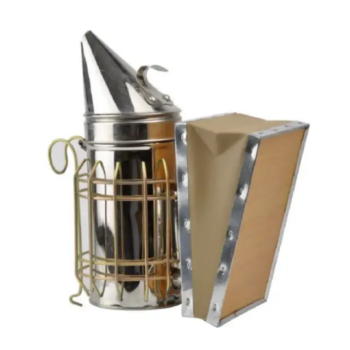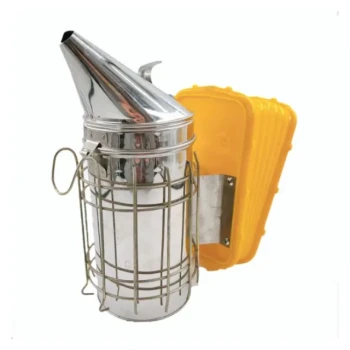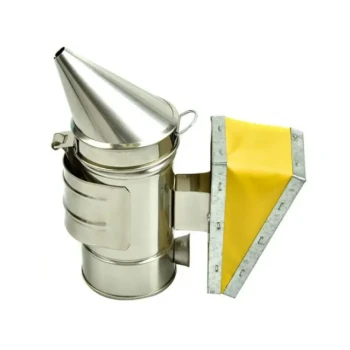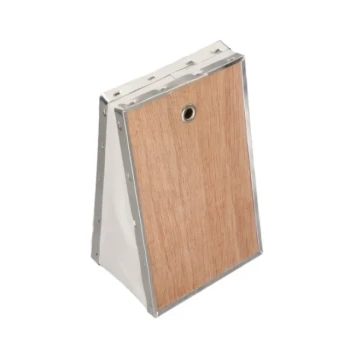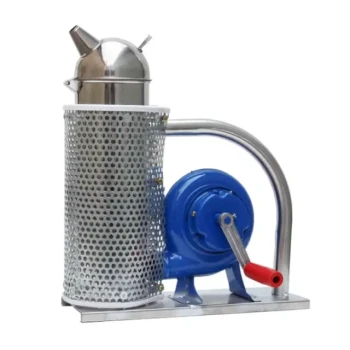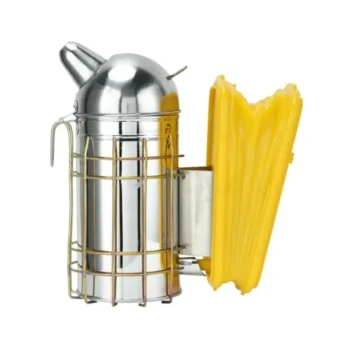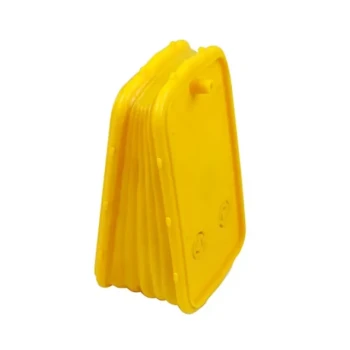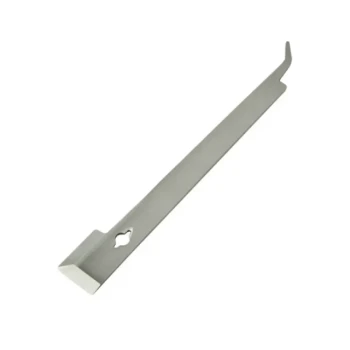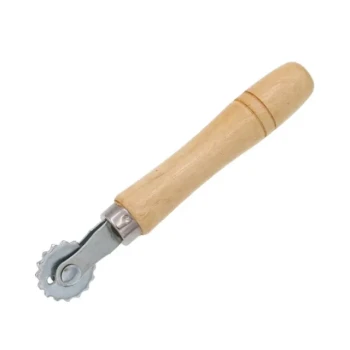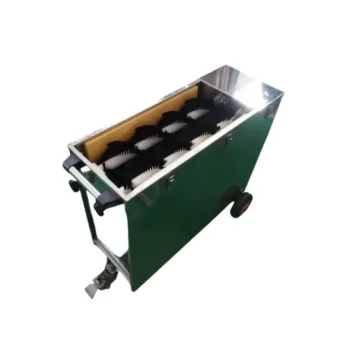The best fuel for a bee smoker is not a single item, but a two-part combination. You need a fast-burning material like crumpled newspaper or dry pine needles to act as kindling, followed by a slower, more substantial fuel that produces cool, white smoke for a long period.
The core principle is to create long-lasting, cool smoke, not a hot fire. The ideal setup involves a quick-lighting starter (kindling) to establish embers, followed by a denser, natural fuel that will smolder consistently throughout your hive inspection.
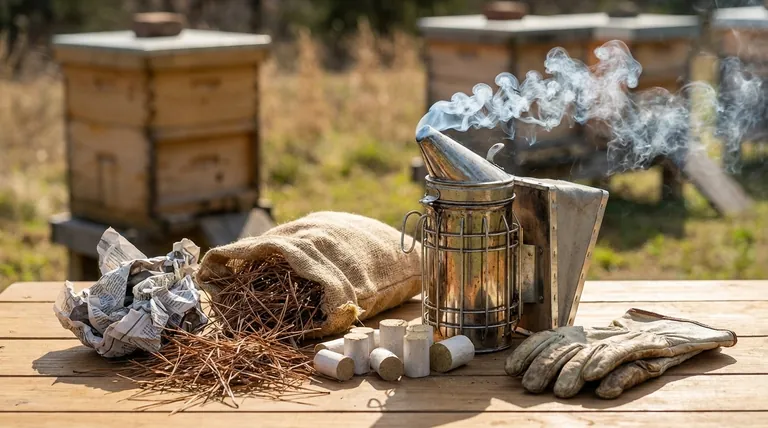
The Principles of Effective Smoker Fuel
A bee smoker isn't just about making smoke; it's about making the right kind of smoke. The goal is to interrupt the bees' alarm pheromones and encourage them to eat honey, making them calmer and less defensive.
Stage 1: The Kindling (Getting Started)
The first step is to create a quick, hot base to light your main fuel. This material should catch fire easily.
Common choices for kindling include crumpled newspaper (untreated ink only), dry pine needles, cardboard, or untreated burlap. These materials create the initial flame needed to ignite your primary fuel source.
Stage 2: The Main Fuel (Keeping it Going)
Once you have a good base of embers from your kindling, you add a denser, slower-burning fuel on top. This is what will produce the sustained, cool smoke you need.
This fuel should be packed firmly, but not so tight that it chokes the airflow. Your goal is a smolder, not a flame. Commercial starter pellets, untreated cotton, or other natural, substantial materials work well.
Characteristics of an Ideal Fuel
Not all materials are suitable for a bee smoker. The health of your bees and the purity of your honey depend on making the right choice.
Natural and Untreated is Non-Negotiable
Never burn anything synthetic, treated, or containing chemicals. This includes glossy paper, pressure-treated wood, or plastics. Toxins can harm your bees and contaminate the honey and wax.
Cool, White Smoke is the Goal
Hot smoke will burn and agitate your bees. Before puffing smoke into the hive, test it on the back of your hand. It should be warm, not hot. The bellows are used to pump air and keep the fuel smoldering, not to create a large flame.
A Long-Lasting Burn is Key
The last thing you want is for your smoker to go out in the middle of a hive inspection. Packing enough of a slow-burning main fuel ensures you have consistent smoke without the need to stop and refuel.
Common Pitfalls to Avoid
How you use the smoker is just as important as what you put inside it. Improper use can be counterproductive and even harmful.
Mistake 1: Using Too Much Smoke
Over-smoking a hive can do more harm than good. It can drive bees from the frames, disrupt their work, and even damage their respiratory systems. A few gentle puffs at the entrance and under the cover are usually sufficient.
Mistake 2: Working Too Close to the Bees
Always keep the smoker nozzle at least five inches away from the bees. The heat from the smoker's tip can easily burn and damage their delicate wings.
Mistake 3: Starting an Inspection in Poor Conditions
Avoid working your hives on cold, windy, or rainy days. Bees are naturally more defensive in poor weather, and no amount of smoke will fully calm them.
Making the Right Choice for Your Goal
Your fuel choice can be adapted based on the task at hand.
- If your primary focus is a quick, five-minute check: A simple combination of newspaper and a handful of dry pine needles will likely suffice.
- If your primary focus is a full, detailed inspection: Use a substantial main fuel like commercial pellets or untreated burlap over your kindling to ensure the smoke lasts.
- If your primary focus is always bee health: Prioritize 100% natural, untreated materials and always use the minimum amount of cool smoke necessary to keep the colony calm.
Ultimately, a well-managed smoker is a tool for calm, gentle communication with your bees.
Summary Table:
| Stage | Purpose | Ideal Materials |
|---|---|---|
| 1. Kindling | Quick ignition | Crumpled newspaper, dry pine needles, untreated burlap |
| 2. Main Fuel | Sustained, cool smoke | Commercial pellets, untreated cotton, dense natural fibers |
Ensure your smoker is always ready for a productive hive inspection. At HONESTBEE, we supply commercial apiaries and beekeeping equipment distributors with high-quality, reliable beekeeping supplies. Our range of smoker fuels and equipment is designed for professional beekeepers who prioritize bee health and operational efficiency.
Let us help you maintain calm, productive hives. Contact our wholesale experts today to discuss your supply needs.
Visual Guide
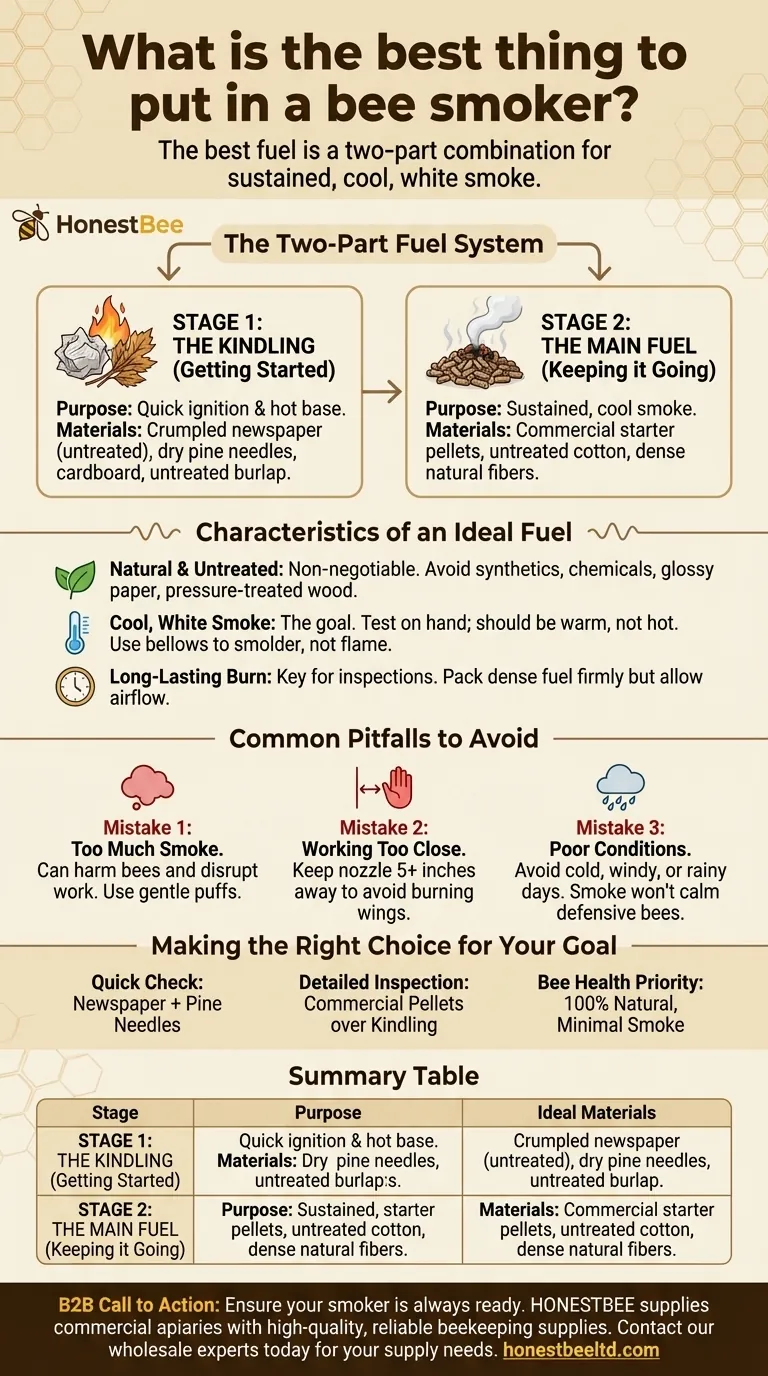
Related Products
- 54-Piece Smoker Fuel Pellets for Beekeeping Beehive Smoker Fuel
- Premium Traditional Copper Bee Smoker with Bellows
- Economy Galvanized Beekeeping Honey Bee Smoker for Wholesale
- Stainless Steel Honey Bee Smoker Hive and Honeycomb Smoker for Beekeeping
- Professional Bee Smoker with Elongated Spout and Durable Bellows for Beekeeping
People Also Ask
- What is used in a bee smoker? Master the Best Fuels for Calm, Healthy Hives
- How should you start the fire in a bee smoker? A Step-by-Step Guide for a Calm Hive
- What can I use for bee smoker fuel? Choose Safe, Natural Materials for a Calm Hive
- What is the best bee hive smoker fuel? Choose Natural, Slow-Burning Fuel for Calm Bees
- What fuels are recommended for beehive smokers? Master the Art of Calm, Controlled Inspections

